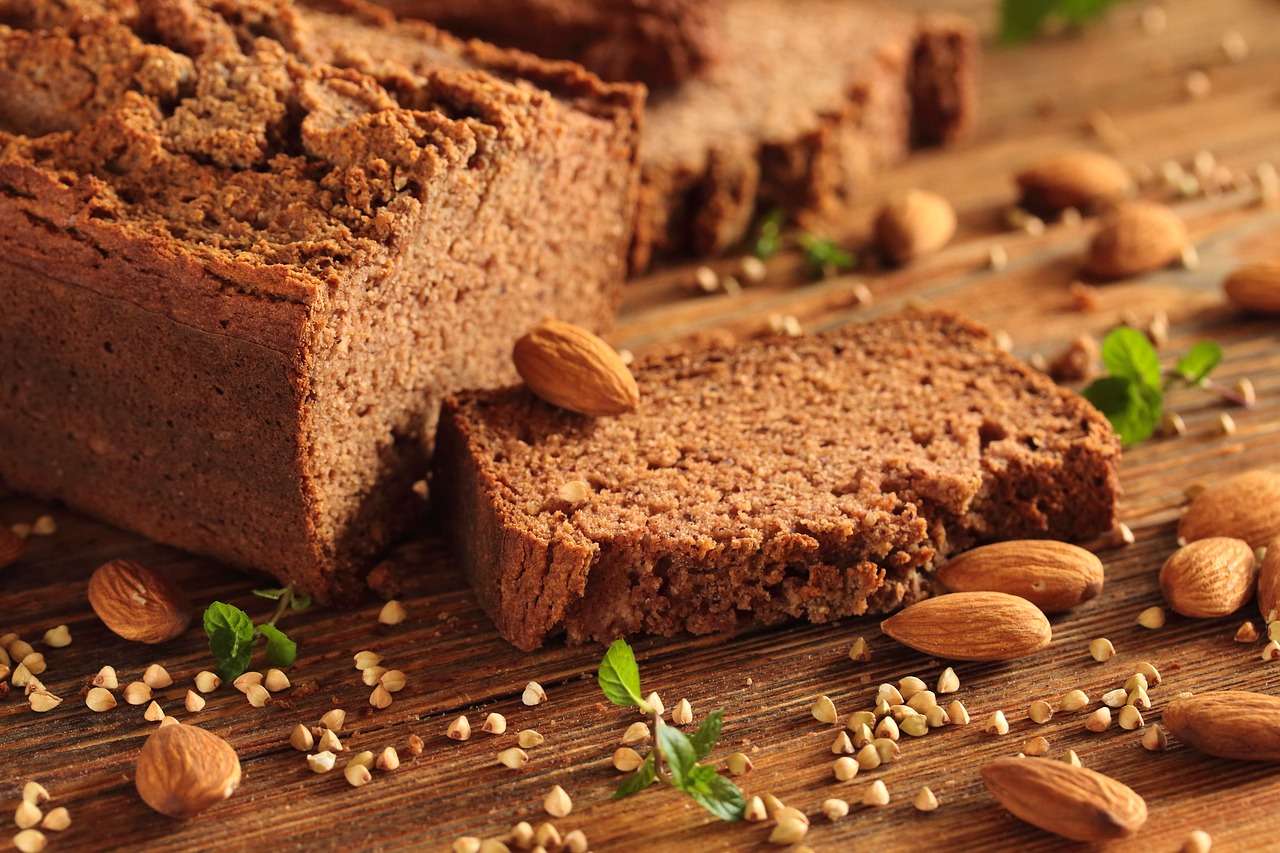Gluten-Free: A Complete Guide
The protein gluten is a common component found in your favorite food items containing wheat and flour.
But as awareness of Celiac Disease is becoming a common topic of conversation, the concept of gluten-free diet is also rising in popularity along with it.
A gluten-free diet unlike most common modern diet plans provides a variety of benefits for people with and without wheat allergies or sensitivities.
While sitting on the most “buzzed” list of modern-day diet fads, gluten-free diets aren’t just limited to people with medical conditions, instead, it has become somewhat of an eating trend.
Surprisingly closer to a healthy diet chart, a gluten-free diet allows you to have a full meal with the goodness of all necessary proteins and vitamins.
But what is a gluten-free diet exactly and how does one begin?
There are a lot of rumors floating around about a gluten-free diet, while some consider it to be a healthier way of eating, others consider it to be a healthier way of losing weight.
To help you clear your confusion and plan your own gluten-free diet, below is a complete guide to help you start a wholesome gluten-free diet.
Table of Contents
What is Gluten and Why is it bad for you?
Gluten is a family of structural proteins that are generally found in cereal grains like wheat, barley, and rye.
Etymologically, the term gluten is a Latin word that literally means “glue”. Just as its name suggests, gluten helps give the flour a sticky consistency when it is mixed with water.
The glue-like property of gluten allows it to create networks and channels which allow the bread to rise up when it is baked. Gluten is also responsible for giving the bread a chewy texture.
The term gluten strictly refers to the protein found in the cereal grain (wheat) proteins.
In medical literature, the term is referred to the combination of two naturally occurring proteins prolamin and glutenin that have been proven to trigger Celiac Disease in individuals.
Celiac Disease is an autoimmune condition that triggers the body to attack itself due to exposure to gluten.
Almost 1% of individuals in the Western World suffer from this condition that can severely damage the intestines.
If consuming products constraint grains such as wheat, rye, and barely makes you feel uncomfortable it is best to get a Celiac Disease screening.
What is a Gluten-Free Diet?
Many food items are prepared with gluten, hence it is recommended to check the labels before purchasing any items.
Just like any other healthy diet plan, a gluten-free diet is wholesome, filling, and as the name suggests, gluten-free.
An ideal gluten-free plate is embellished with nutritionally rich gluten-free food items such as fruits, vegetables, beans, nuts, seeds, lean meats, and fish.
While most consider all grains to be harmful, grain lovers can still enjoy food items integrating grains like rice, millet, quinoa, corn, or buckwheat.
Gluten-Free diet: What not to have?
It can be a perplexing task to determine which food to avoid especially when you have no idea where to begin.
In order to plan out a successful gluten-free diet, one should be equipped with the knowledge to distinguish between gluten-free food items and ones that aren’t.
To help you weed out and plan out your new gluten-free diet chart, below are items you should definitely avoid:
Wheat-Based Products:
- Wheat Flour
- Wheat Bran
- Wheat Spelt
- Kamut
- Durum
- Semolina
Other ingredients including Gluten:
- Rye
- Barley
- Malt
- Brewer’s Yeast
- Triticale (a hybrid of wheat and rye)
Food Items containing gluten that you should avoid:
Gluten in food items might be more common than one may think. Below are some common food items that contain gluten:
- Bread: all white bread containing flour and wheat
- Pasta: all kinds of pasta containing wheat and flour
- Sauces: Soya Sauce, hoisin sauce, teriyaki sauce, salad dressing, marinades
- Snacks: pre-packaged convenience food, candies, pretzels, chips, crackers, muesli bars, cookies, and roasted nuts
- Beverages: beer and some alcoholic flavored beers
- Other foods you should avoid: common broth, couscous, cereal, and pizza base/crust
What can you eat on a gluten-free diet?
While there are certain items you must refrain from consuming on a gluten-free diet, there are still plenty of items one can enjoy and remain healthy.
Below is a list of items you can enjoy when on a gluten-free diet:
- Dairy Products: unflavoured dairy products, plain milk, cheese, and yogurt
- Meat, Poultry, Fish: all types of meats and poultry are allowed expected battered or coated ones
- Eggs: one can enjoy the entire egg including egg whites and egg yolks
- Vegetables: carrots, tomatoes, potatoes, asparagus, onions, peppers, mushrooms, broccoli, etc
- Fruits: melons, pineapple, berries, citrus fruits, bananas, peaches, etc
- Nuts and seeds: almonds, cashew, chia seeds, hemp seeds, walnuts, flax seeds, pistachios, etc
- Herbs and spices: cilantro, black pepper, oregano, parsley, thyme, rosemary, etc
- Beverages: All beverages are safe to drink except beer (unless the beer is labeled as gluten-free)
Grains, Flours, Scratches that are Gluten-Free:
Grains are an important component of a wholesome, filling, and healthy meal, and for very good reasons.
Grains are a rich source of carbohydrates, fiber, and proteins, that provide energy to the body throughout the day.
While there is a common misconception about every grain containing, there are several grains you can still incorporate into your meals that do not contain gluten.
Below is a list of grains, flours, and starches that are totally safe and gluten-free:
Gluten-Free Grains:
- Rice
- Millet
- Quinoa
- Corn
- Oats (recommended to use oats that are labeled as gluten-free)
- Buckwheat
- Potato Flour
- Amaranth
- Cassava/Yuca
- Sorghum
- Teff
Gluten-Free Starches and Flours:
- Potato Flour
- Cornstarch
- Tapioca Flour
- Soy Flour
- Chickpea Flour
- Corn Flour
- Almond flour or almond meal
- Coconut flour
A simple Gluten-Free Diet plan you can follow
While a gluten-free diet promotes individuals to avoid ingredients containing gluten, one must incorporate other items to meet their nutritional needs and requirements.
Below is a sample menu you can refer to in order to create and customize your very own gluten-free diet plan:
Monday:
Breakfast: A chia seed pudding, greek yogurt, and your favorite fruits
Lunch: vegetable fruit, lentils, chicken
Dinner: tacos with steak (tacos made from gluten-free corn tortilla), mushrooms, spinach
Tuesday:
Breakfast: Egg white omelet with vegetable
Lunch: quinoa salad with vegetables like sliced tomatoes, spinach, and avocado
Dinner: A garden salad with shrimps on a skewer
Wednesday:
Breakfast: Oatmeal with your favorite fresh berries and fruits, as well as walnuts
Lunch: hard-boiled eggs and tuna salad
Dinner: chicken stir fry with broccoli, gluten-free soya sauce
Thursday:
Breakfast: gluten-free toasts with eggs and avocado
Lunch: a gluten-free burrito bowl with black beans, fajita veggies, and rice
Dinner: shrimps in garlic and butter with a side salad
Friday:
Breakfast: bananas and berries smoothie
Lunch: a gluten-free tortilla chicken salad wrap
Dinner: baked salmon with baked vegetables like potatoes, broccoli, carrots tomatoes, and green beans
Saturday:
Breakfast: a zucchini and mushroom frittata
Lunch: Stuffed bell peppers with beef, tomatoes, cheese, and rice (brown)
Dinner: quinoa salad with vegetables and roasted chicken
Sunday:
Breakfast: Gluten-free bread with poached eggs
Lunch: Chicken salad
Dinner: roasted vegetables and lamb
What are the benefits of a gluten-free diet?
Gluten-free provides a plethora of benefits to people with celiac disease and other gluten-related allergies, sensitivities, or conditions.
Below is a list of benefits that a gluten-free diet may provide to an individual:
Helps with digestive problems:
The main reason for people to switch to a gluten-free diet is due to digestive problems. The symptoms of these problems are:
- Bloating
- Gas
- Diarrhea
- Constipation
- Fatigue
If gluten is the main culprit behind your problems then opting for a gluten-free diet can help relieve your problems.
Helps with chronic Inflammation:
People with celiac disease often experience constant inflammation when consuming food items containing gluten.
A gluten-free diet for people with chronic inflammation due to celiac disease can help significantly.
Helps boost energy:
People with celiac disease can also experience chronic fatigue or tiredness. Along with fatigue, they can also experience brain fog, forgetfulness, confusion, and difficulty in focusing.
The symptoms mentioned above are a product of prolonged damage to the intestines and the gut.
For people with celiac disease, eliminating gluten from the diet can help significantly with tiredness, and fatigue, and often gives individuals a boost of energy.
Helps with weight loss:
A gluten-free diet can be a healthy and nutritional alternative to your rigid diet plans.
A gluten-free diet plan often eliminates high-calorie and processed foods from the diet and replaces them with healthier alternatives like fruits and vegetables.
It is also recommended to avoid gluten-free desserts like cakes or pastries if you’re aiming to lose and maintain your weight.

